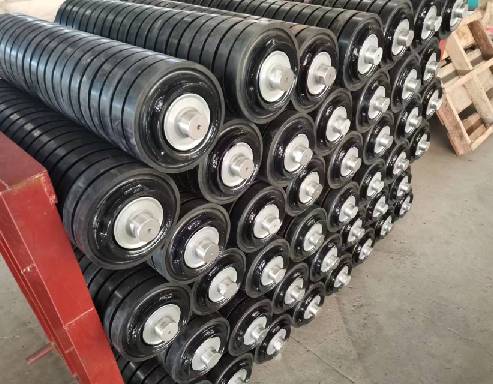 Afrikaans
Afrikaans  Albanian
Albanian  Amharic
Amharic  Arabic
Arabic  Armenian
Armenian  Azerbaijani
Azerbaijani  Basque
Basque  Belarusian
Belarusian  Bengali
Bengali  Bosnian
Bosnian  Bulgarian
Bulgarian  Catalan
Catalan  Cebuano
Cebuano  Corsican
Corsican  Croatian
Croatian  Czech
Czech  Danish
Danish  Dutch
Dutch  English
English  Esperanto
Esperanto  Estonian
Estonian  Finnish
Finnish  French
French  Frisian
Frisian  Galician
Galician  Georgian
Georgian  German
German  Greek
Greek  Gujarati
Gujarati  Haitian Creole
Haitian Creole  hausa
hausa  hawaiian
hawaiian  Hebrew
Hebrew  Hindi
Hindi  Miao
Miao  Hungarian
Hungarian  Icelandic
Icelandic  igbo
igbo  Indonesian
Indonesian  irish
irish  Italian
Italian  Japanese
Japanese  Javanese
Javanese  Kannada
Kannada  kazakh
kazakh  Khmer
Khmer  Rwandese
Rwandese  Korean
Korean  Kurdish
Kurdish  Kyrgyz
Kyrgyz  Lao
Lao  Latin
Latin  Latvian
Latvian  Lithuanian
Lithuanian  Luxembourgish
Luxembourgish  Macedonian
Macedonian  Malgashi
Malgashi  Malay
Malay  Malayalam
Malayalam  Maltese
Maltese  Maori
Maori  Marathi
Marathi  Mongolian
Mongolian  Myanmar
Myanmar  Nepali
Nepali  Norwegian
Norwegian  Norwegian
Norwegian  Occitan
Occitan  Pashto
Pashto  Persian
Persian  Polish
Polish  Portuguese
Portuguese  Punjabi
Punjabi  Romanian
Romanian  Russian
Russian  Samoan
Samoan  Scottish Gaelic
Scottish Gaelic  Serbian
Serbian  Sesotho
Sesotho  Shona
Shona  Sindhi
Sindhi  Sinhala
Sinhala  Slovak
Slovak  Slovenian
Slovenian  Somali
Somali  Spanish
Spanish  Sundanese
Sundanese  Swahili
Swahili  Swedish
Swedish  Tagalog
Tagalog  Tajik
Tajik  Tamil
Tamil  Tatar
Tatar  Telugu
Telugu  Thai
Thai  Turkish
Turkish  Turkmen
Turkmen  Ukrainian
Ukrainian  Urdu
Urdu  Uighur
Uighur  Uzbek
Uzbek  Vietnamese
Vietnamese  Welsh
Welsh  Bantu
Bantu  Yiddish
Yiddish  Yoruba
Yoruba  Zulu
Zulu conveyor system parts
Understanding Conveyor System Parts A Comprehensive Overview
Conveyor systems are integral to many industries, facilitating the smooth and efficient movement of goods and materials. These systems are composed of various components, each playing a vital role in ensuring optimal performance and reliability. In this article, we will explore the key parts of conveyor systems, their functions, and their significance in industrial operations.
1. Belt The Backbone of the Conveyor
The conveyor belt is the most recognizable part of a conveyor system. It serves as the surface on which materials are transported. Conveyor belts can be made from various materials, including rubber, fabric, and metal, depending on the application. For example, heavy-duty belts are utilized in mining operations, while lighter belts might be employed in packaging industries. The choice of belt material directly impacts the system's durability, efficiency, and maintenance needs.
2. Drive Motor The Power Behind the Movement
The drive motor is responsible for powering the conveyor system. It converts electrical energy into mechanical energy, enabling the belt to move. The type and size of the motor are chosen based on the required load capacity and speed of the conveyor. Motors can range from small fractional horsepower models to large industrial motors, depending on the application's needs.
3. Pulleys The Guiding Force
Pulleys are essential components of a conveyor system, serving multiple functions. They are used to support and guide the conveyor belt, facilitating its movement around the system. Pulleys sit at either end of the conveyor and include drive pulleys, which are connected to the motor, and idler pulleys, which support the belt. The materials and construction of the pulleys are critical, as they must withstand the stress and strain imposed during operation.
conveyor system parts

4. Frame The Structural Foundation
The frame provides the structural integrity of the conveyor system. Typically constructed from steel or aluminum, the frame supports the weight of the materials being transported and all other components of the conveyor. The design and construction of the frame must accommodate the specific loading requirements and operational environment, whether it be a factory floor or a warehouse.
5. Idlers Supporting the Load
Idlers are rollers that support the weight of the conveyor belt and the materials it carries. They are critical for reducing friction and wear on the belt. Proper spacing and tension of the idlers ensure stable movement, enhancing the longevity of the conveyor system. There are various types of idlers, including trough idlers, flat idlers, and return idlers, each designed for specific applications.
6. Sensors and Controls Ensuring Efficiency and Safety
Modern conveyor systems are often equipped with sensors and control systems that enhance operational efficiency and safety. These components can include photoelectric sensors, which detect the presence of items on the conveyor, and variable frequency drives (VFDs), which allow for precise control of belt speed. Integrating these technologies can optimize productivity and reduce the risk of accidents.
Conclusion
In summary, conveyor systems are composed of various integral parts that work together to ensure efficient material handling. Understanding the roles and functions of these components – including belts, motors, pulleys, frames, idlers, and control systems – is essential for anyone involved in the design, operation, or maintenance of conveyor systems. By optimizing these parts, industries can enhance productivity, reduce operational costs, and improve safety in their material handling processes.
-
Revolutionizing Conveyor Reliability with Advanced Rubber Lagging PulleysNewsJul.22,2025
-
Powering Precision and Durability with Expert Manufacturers of Conveyor ComponentsNewsJul.22,2025
-
Optimizing Conveyor Systems with Advanced Conveyor AccessoriesNewsJul.22,2025
-
Maximize Conveyor Efficiency with Quality Conveyor Idler PulleysNewsJul.22,2025
-
Future-Proof Your Conveyor System with High-Performance Polyurethane RollerNewsJul.22,2025
-
Driving Efficiency Forward with Quality Idlers and RollersNewsJul.22,2025





























